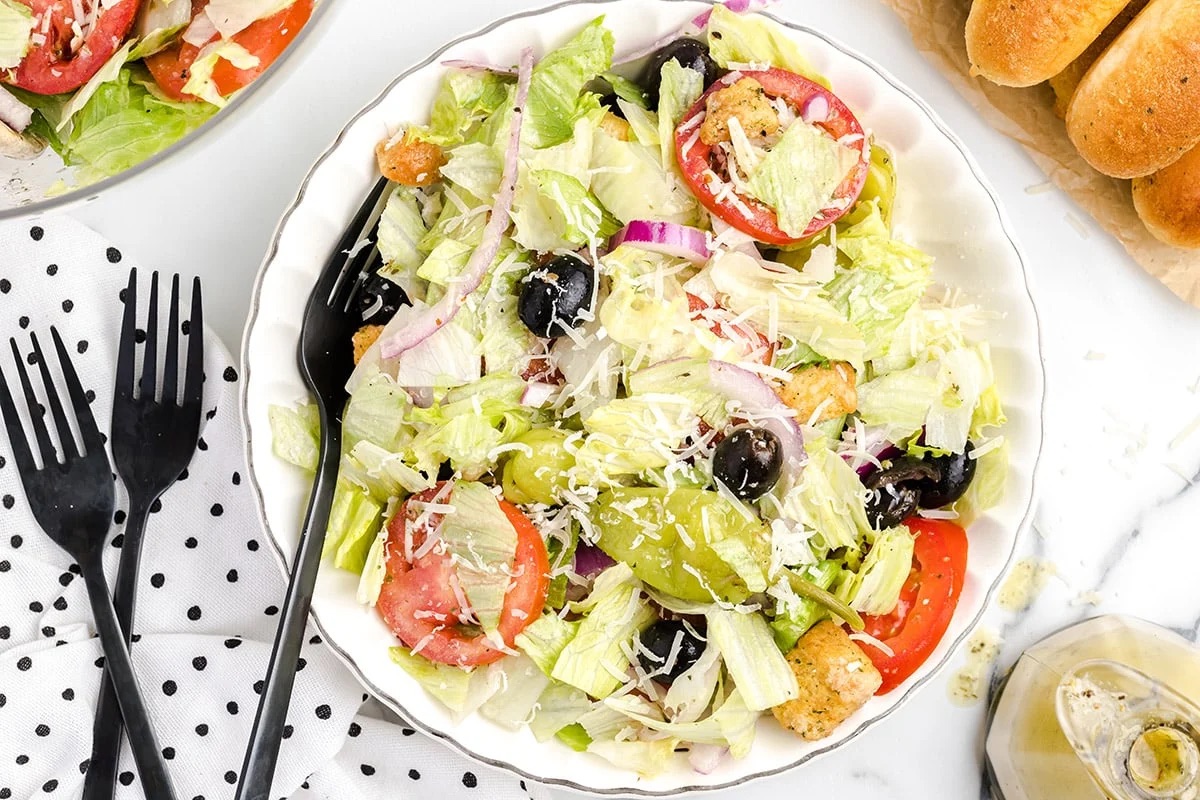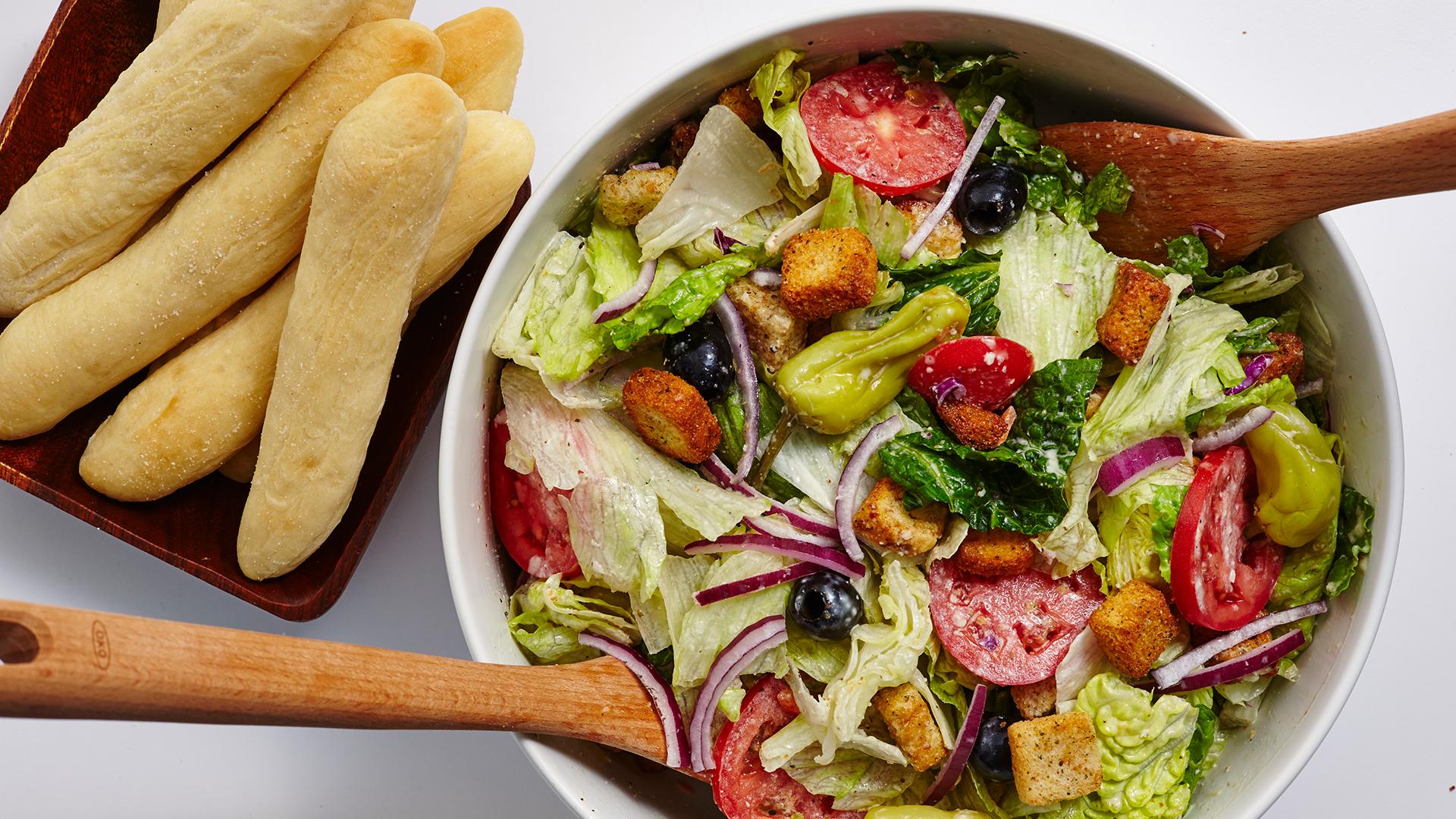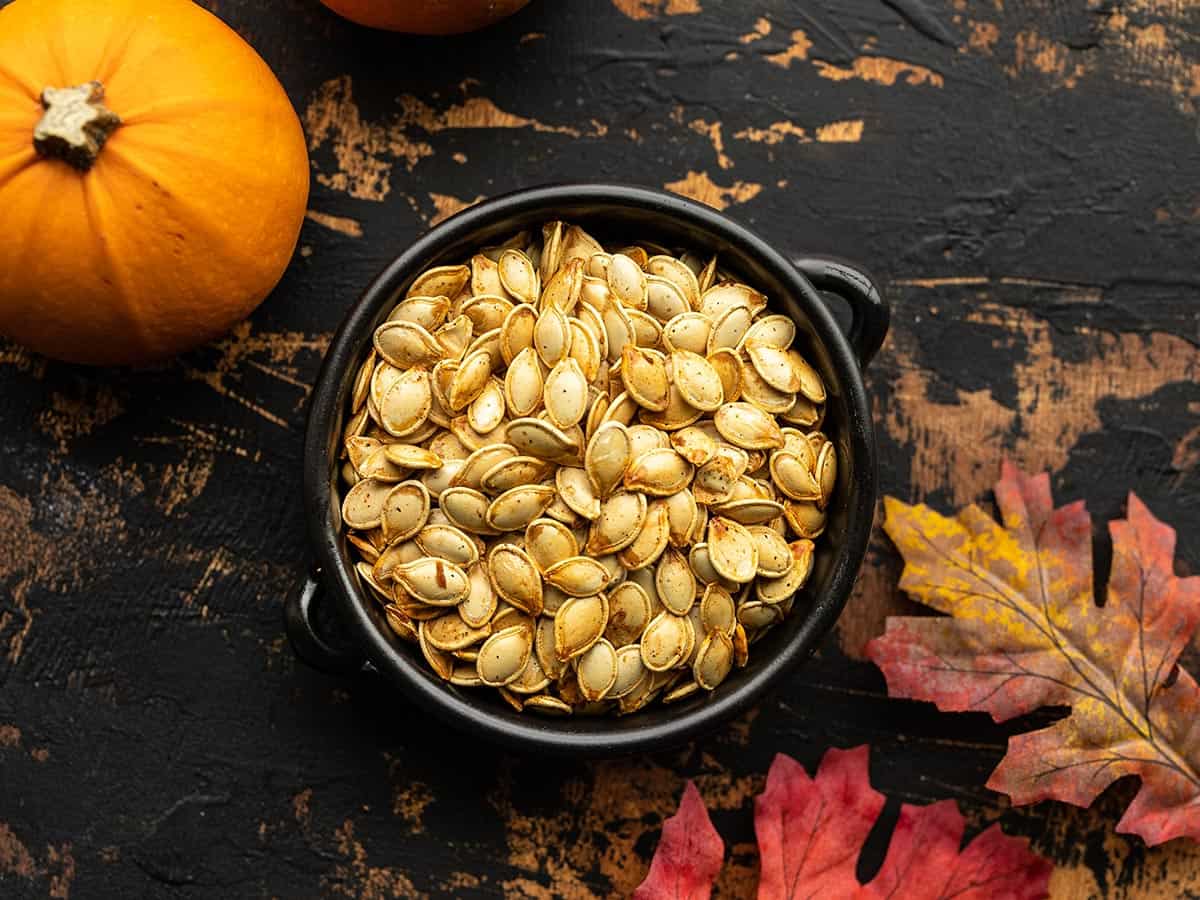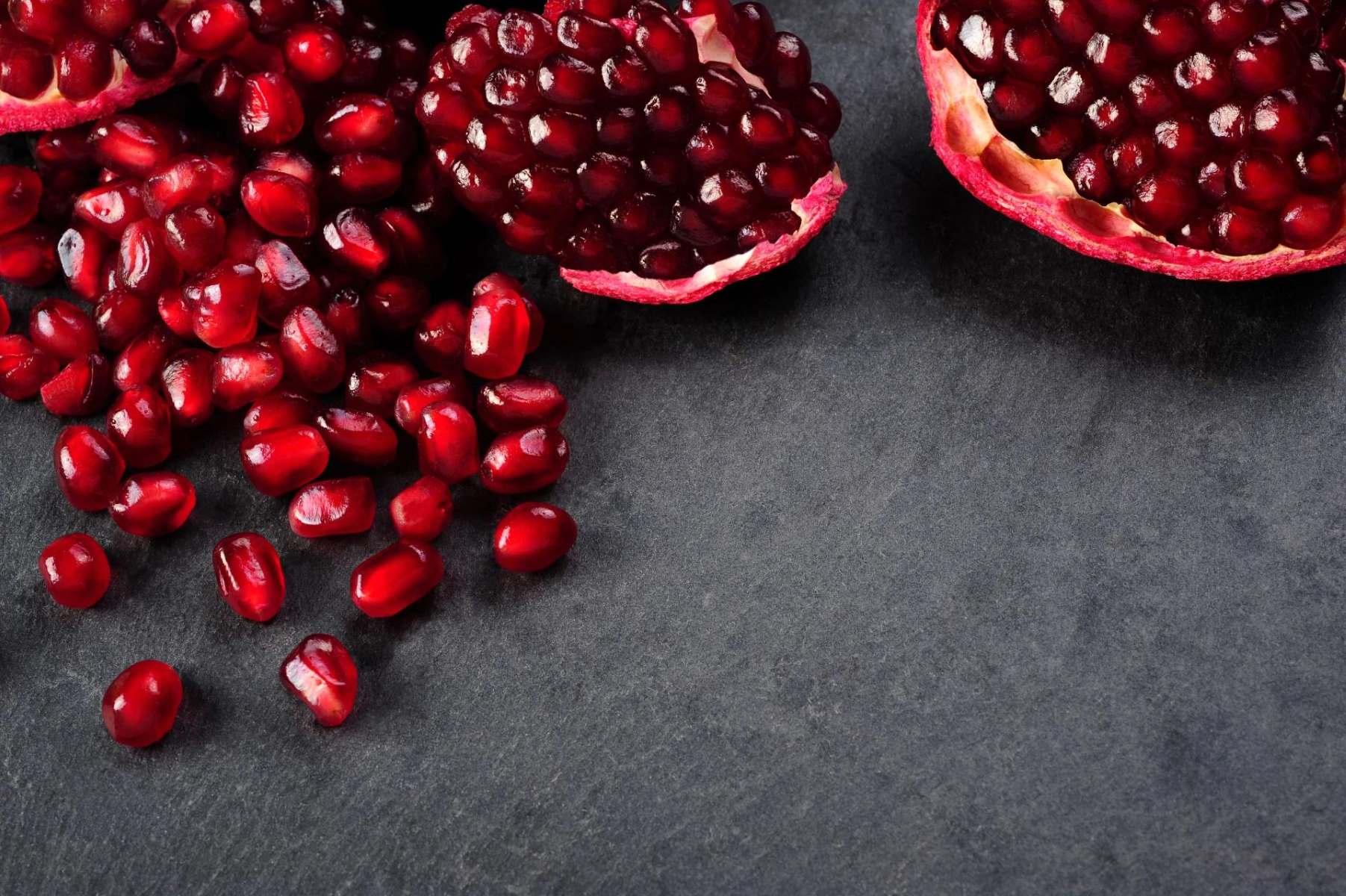

Articles
How Many Calories In An Olive Garden Salad
Modified: December 6, 2023
Discover the calorie count of an Olive Garden salad and learn how to incorporate gardening into your healthy lifestyle. Explore delicious salad recipes and gardening tips today!
(Many of the links in this article redirect to a specific reviewed product. Your purchase of these products through affiliate links helps to generate commission for Storables.com, at no extra cost. Learn more)
Introduction
Welcome to our in-depth exploration of Olive Garden salad and its nutritional information! If you’re a fan of this popular Italian-American chain, you’ve probably indulged in their signature salad at one point or another. Olive Garden’s salad is well-known for its fresh ingredients, vibrant flavors, and complimentary house dressing.
In this article, we’ll dive into the details of Olive Garden salad, including its nutritional content and how it can fit into a healthy diet. Whether you’re a calorie-conscious individual or simply curious about the nutritional profile of this beloved salad, we’ve got you covered.
But first, let’s briefly discuss what makes Olive Garden salad so special. The restaurant’s commitment to using high-quality and seasonal ingredients ensures that their salads are packed with flavor and nutritional value. From crisp romaine lettuce to juicy tomatoes and tangy black olives, every bite of Olive Garden salad is a celebration of fresh produce.
And let’s not forget about the famous Olive Garden salad dressing! This zesty and creamy dressing perfectly complements the crispness of the vegetables, adding an addictive flavor to the overall salad experience.
Now that we’ve whet your appetite, let’s move on to the nutritional information of Olive Garden salad. Understanding the calorie breakdown and nutritional content can help you make informed decisions when enjoying this tasty salad.
Key Takeaways:
- Enjoy Olive Garden salad in moderation, as it typically contains 150-250 calories per serving, with low protein and high fiber. Customize with protein, veggies, and lighter dressing for a satisfying and nutritious meal.
- Indulge in Olive Garden salad’s fresh and vibrant flavors, but be mindful of high sodium and calorie-dense components like olives and croutons. Customize with protein, veggies, and lighter dressing for a healthier dining experience.
Read more: How Many Calories Are In A Garden Salad
Understanding Olive Garden Salad
Before we dive into the nutritional details, let’s take a closer look at the components that make up Olive Garden salad. The traditional Olive Garden salad is a combination of fresh lettuce, sliced red onions, crisp cucumbers, juicy tomatoes, tangy black olives, and croutons. All these ingredients are tossed together in their signature house dressing, which is a blend of vinegar, oil, and secret herbs and spices.
The lettuce used in Olive Garden salad is typically romaine lettuce, known for its crunchy texture and mild flavor. Romaine lettuce is rich in essential nutrients such as fiber, vitamin C, and vitamin K, which contribute to a healthy diet.
The red onions not only add a pop of color to the salad but also provide a bold and slightly sweet flavor. Red onions are known for their anti-inflammatory properties and are a good source of antioxidants.
Cucumbers, with their refreshing crunch and high water content, are a hydrating addition to the salad. They are low in calories and a good source of vitamins and minerals like vitamin K and potassium.
The juicy tomatoes in Olive Garden salad not only add a burst of flavor but also provide a range of health benefits. Tomatoes are packed with vitamins A and C, as well as lycopene, an antioxidant that has been linked to a reduced risk of certain diseases.
Tangy black olives add a unique flavor to the salad. Olives are a good source of healthy fats, antioxidants, and vitamin E, making them a nutritious addition to the salad.
Lastly, the crispy croutons in Olive Garden salad provide a satisfying crunch. While croutons are typically made from bread, they are usually high in sodium and calories. If you’re watching your intake, you may want to consume them in moderation.
Now that we have a better understanding of the ingredients in Olive Garden salad, let’s move on to examining its nutritional content and calorie breakdown.
Nutritional Information
Knowing the nutritional content of Olive Garden salad can help you make informed choices when incorporating it into your diet. Here is an overview of the typical nutritional information for Olive Garden salad:
- Calories: The calorie content of a serving of Olive Garden salad can vary depending on the size and ingredients. On average, a standard serving of Olive Garden salad with dressing contains around 150-250 calories.
- Protein: Olive Garden salad is not particularly high in protein. A serving usually contains around 2-5 grams of protein, depending on the ingredients.
- Carbohydrates: The carbohydrate content of Olive Garden salad is relatively low. A serving typically provides around 10-15 grams of carbohydrates. Most of these carbohydrates come from the vegetables and croutons in the salad.
- Fiber: Olive Garden salad is a good source of dietary fiber, thanks to the inclusion of vegetables. A standard serving can provide 2-4 grams of fiber, which contributes to a healthy digestive system and can help you feel full and satisfied.
- Fat: The fat content of Olive Garden salad is generally low. A serving usually contains around 8-12 grams of fat, primarily from the dressing and olives. However, the fat in Olive Garden salad is mainly healthy monounsaturated and polyunsaturated fats.
- Sodium: One thing to be mindful of when consuming Olive Garden salad is the sodium content. Due to the dressing and olives, the salad can be relatively high in sodium. A typical serving contains around 400-600 milligrams of sodium.
It’s important to note that these nutritional values are approximations and can vary depending on portion sizes and modifications. Additionally, if you make any changes to the salad or dressing, such as adding extra toppings or using a different dressing, the nutritional content will differ.
Remember, these values are for the salad itself and do not include any additional items that may be added, such as grilled chicken or shrimp. If you include protein or other additions, it’s essential to take those into consideration when tracking your overall calorie intake.
Now that we have a better understanding of the general nutritional information of Olive Garden salad, let’s explore the calorie breakdown in more detail.
An Olive Garden salad typically contains around 150-350 calories, depending on the dressing and toppings. Opt for a lighter dressing and go easy on the cheese to keep the calorie count lower.
Calorie Breakdown
The calorie breakdown of Olive Garden salad can vary depending on factors such as portion size and any modifications made to the ingredients. Let’s take a closer look at how the different components contribute to the overall calorie content:
- Lettuce: The lettuce in Olive Garden salad is low in calories, providing only a negligible amount. The focus is on providing volume and fiber without significantly impacting the calorie count.
- Red Onions: Red onions are also low in calories, contributing only a small amount to the total calorie count of the salad.
- Cucumbers: Cucumbers are a low-calorie vegetable, adding refreshing crunch to the salad while contributing minimal calories.
- Tomatoes: Tomatoes, being low in calories, provide flavor and nutrients without significantly impacting the overall calorie content.
- Black Olives: While black olives add a tangy flavor to the salad, they are relatively high in calories compared to other salad components. However, the calorie content is still moderate and can be enjoyed in moderation.
- Croutons: Croutons can be a significant source of calories in Olive Garden salad. Due to their high-fat and high-carbohydrate content, they contribute to the overall calorie count. If you’re watching your calorie intake, consider consuming croutons sparingly or opting for a healthier alternative.
- Dressing: The dressing in Olive Garden salad can vary in calorie content depending on the portion and type used. The house dressing is flavorful but can be high in calories and fat. If you’re mindful of your calorie intake, consider requesting the dressing on the side or opting for a lighter dressing option.
When analyzing the calorie breakdown of Olive Garden salad, it’s important to remember that portion size and any modifications can significantly impact the overall calorie content. Additionally, if you choose to add any protein sources, such as grilled chicken or shrimp, to your salad, it will increase the calorie count accordingly.
As with any food, moderation and balance are key. Enjoying Olive Garden salad as part of a balanced and varied diet can contribute to a nutritious meal without derailing your calorie goals.
Now that we have a better understanding of the calorie breakdown, let’s discuss some modifications and additions you can make to customize your Olive Garden salad.
Modifications and Additions
While the traditional Olive Garden salad is delicious as is, you may want to make some modifications or additions to suit your tastes or dietary preferences. Here are a few options to consider:
- Protein: To make your salad more satisfying and balanced, consider adding some protein. Grilled chicken, shrimp, or salmon are popular choices. These additions not only boost the protein content of your salad but also provide additional nutrients.
- Cheese: If you’re a cheese lover, you can add a sprinkle of grated Parmesan or some crumbled feta to your Olive Garden salad. This will add a creamy and tangy element to your salad, but be mindful of the additional calories and sodium content.
- Veggies: Feel free to add extra veggies to your salad to increase the nutritional value. Some options include bell peppers, mushrooms, or even roasted vegetables to add more flavor and variety.
- Nuts or Seeds: If you’re looking to add some crunch and healthy fats to your salad, consider sprinkling some chopped nuts or seeds, such as almonds or sunflower seeds. Not only will this enhance the texture, but it will also add nutritional benefits.
- Dressing Options: Olive Garden offers a variety of dressings, including light options. If you’re watching your calorie and fat intake, you may opt for a lighter dressing or use it sparingly. Alternatively, you can also make your own dressing using olive oil, vinegar, and herbs for a healthier homemade option.
By making modifications and additions to your Olive Garden salad, you can tailor it to your preferences and dietary needs. Whether you’re looking to increase protein, add more veggies, or choose a lighter dressing, customizing your salad allows for a personalized and satisfying dining experience.
Remember to be mindful of portion sizes and the additional calories that can come from modifications and additions. It’s crucial to strike a balance to ensure you’re nourishing your body while enjoying a delicious meal.
Now that we’ve explored the modifications and additions you can make to your Olive Garden salad, let’s wrap up our discussion.
Conclusion
Olive Garden salad is a delicious and popular choice for salad lovers and Italian food enthusiasts alike. With its fresh and vibrant ingredients, it offers a flavorful and refreshing option for those looking to incorporate more greens into their diet.
Understanding the nutritional information and calorie breakdown of Olive Garden salad allows you to make informed choices and customize your salad to fit your dietary preferences and goals. By paying attention to portion sizes and making modifications and additions, you can create a salad that meets your nutritional needs and satisfies your taste buds.
Remember to be mindful of the dressing and any additional toppings you choose to add, as they can significantly impact the calorie content of your salad. Making conscious choices and finding a balance that works for you will result in a more enjoyable and nutritious dining experience.
Whether you’re indulging in Olive Garden salad as a standalone meal or as an accompaniment to your favorite entrees, it’s important to view it as part of an overall healthy and varied diet. By incorporating a wide range of fruits, vegetables, proteins, and whole grains, you can ensure that you’re providing your body with the essential nutrients it needs.
So next time you visit Olive Garden, take a moment to savor their delicious signature salad while keeping in mind the nutritional information and options for customization. Enjoy the crispness of the lettuce, the tanginess of the olives, and the delightful combination of flavors that Olive Garden salad has to offer.
Remember, food is not just about nourishing our bodies, but also about bringing enjoyment and satisfaction. So, embrace your love for Olive Garden salad and make it a part of your balanced and healthy lifestyle!
Are you ready to dig into a bowl of fresh, flavorful, and nutritious Olive Garden salad? We certainly hope so!
Frequently Asked Questions about How Many Calories In An Olive Garden Salad
Was this page helpful?
At Storables.com, we guarantee accurate and reliable information. Our content, validated by Expert Board Contributors, is crafted following stringent Editorial Policies. We're committed to providing you with well-researched, expert-backed insights for all your informational needs.















0 thoughts on “How Many Calories In An Olive Garden Salad”